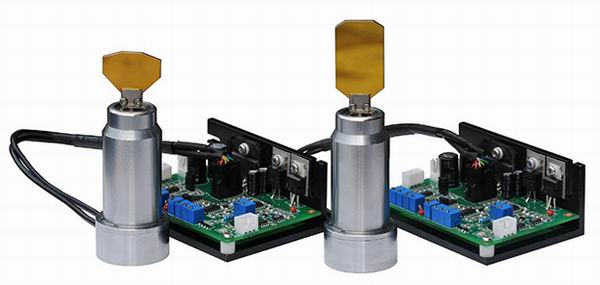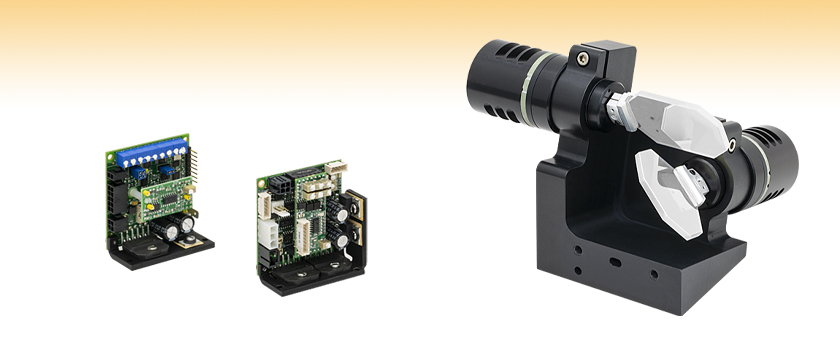Troubleshooting Common Issues with Your Galvanometer Scanner: Idea
Troubleshooting Common Issues with Your Galvanometer Scanner: Idea
Blog Article
Key Applications of a Galvanometer Scanner in Numerous Scientific Research Study Fields
Galvanometer scanners have become integral to various scientific research study fields, using improved precision in applications varying from biomedical imaging to ecological monitoring. Their capability to help with high-resolution imaging techniques, such as confocal microscopy, plays a crucial role in advancing our understanding of cellular structures. In product processing, these devices boost the accuracy of laser cutting and welding. As we discover the diverse applications of galvanometer scanners, it becomes evident that their effect extends much past mere technical capacities, questioning about their future capacity in emerging research study locations.
Biomedical Imaging

In confocal microscopy, galvanometer scanners facilitate the procurement of photos with enhanced resolution and comparison, enabling scientists to imagine mobile elements in vivo. The capacity to promptly catch multiple focal aircrafts improves the three-dimensional reconstruction of tissues, providing vital insights into their architecture and feature.

Moreover, the fast scanning capacities of galvanometer systems add to advancements in vibrant imaging applications, such as keeping track of cellular reactions to stimuli. Hence, galvanometer scanners are vital tools in the field of biomedical imaging, advancing research study and medical diagnostics via their precision and effectiveness.
Product Processing
Precision in product processing is essential for achieving top notch results in various commercial applications (galvanometer scanner). Galvanometer scanners play a crucial duty in boosting this precision by enabling fast and precise motion control throughout the handling of materials such as porcelains, polymers, and metals. These gadgets facilitate methods like laser welding, cutting, and engraving, which need finely-tuned modifications to guarantee ideal results
In laser cutting, as an example, galvanometer scanners enable for elaborate styles to be carried out with high fidelity, minimizing waste and enhancing production efficiency. The quick activity abilities allow fast adjustments in the laser beam of light path, which is vital for preserving consistent reducing quality across differing material thicknesses. In laser welding applications, the accuracy provided by galvanometer scanners guarantees strong joints with marginal thermal distortion, thus boosting architectural integrity.
In addition, the versatility of galvanometer scanners to various laser types and wavelengths even more widens their utility in material handling. Their capacity to operate in tandem with innovative software for real-time monitoring and control adds an added layer of elegance, allowing makers to achieve accurate specs customized to details applications. Thus, galvanometer scanners are important in progressing the capacities of material processing technologies.
Optical Characterization
In the world of optical characterization, the role of galvanometer scanners comes to be increasingly substantial as they help with the analysis of different optical buildings with high precision. These gadgets enable precise control of laser light beams, permitting researchers to systematically probe materials at several angles and frequencies. This ability is crucial for identifying the refractive index, absorption coefficient, and scattering buildings of varied products.
Galvanometer scanners are particularly effective in methods such as optical comprehensibility tomography (OCT) and laser-induced fluorescence (LIF), where rapid scanning is vital. By attaining high-speed modulation of the laser position, galvanometer scanners improve the temporal resolution of these techniques, resulting in improved imaging and evaluation. In addition, they allow the exploration of complex interactions in between light and matter, which is crucial for recognizing material actions under numerous problems.
In addition, the combination of about his galvanometer scanners with spectroscopic methods broadens their energy, enabling detailed spooky analysis across a wide array of wavelengths. This convenience makes them important tools in areas such as products science, biomedical study, and nanotechnology, where detailed optical characterization is paramount for advancing understanding and development.

Laser Micromachining
The advent of laser micromachining has actually revolutionized making procedures, making it possible for the creation of complex frameworks with unequaled precision. This technique utilizes high-intensity laser beams to specifically eliminate material from a substrate, making it feasible to produce micro-scale components that are vital in different sectors. The application of galvanometer scanners in laser micromachining improves the effectiveness and accuracy of this process by enabling exact and rapid beam of light positioning.
Galvanometer scanners assist in the vibrant control of laser beams, enabling intricate patterns to be engraved or reduced with high fidelity. Their quick feedback times and high-resolution capabilities permit the adjustment of laser pulses, which is vital for accomplishing the desired material homes and surface finishes. This modern technology is especially valuable in industries such as electronics, where the miniaturization of elements is vital for efficiency enhancement.
Furthermore, laser micromachining is significantly being utilized in the clinical area for manufacturing accuracy tools and implants. The combination of laser innovation and galvanometer scanning not only streamlines production operations yet likewise minimizes waste and enhances total product use, making it a sustainable option for contemporary production challenges.
Ecological Surveillance
Environmental surveillance has actually come to be increasingly crucial in examining and handling the health of ecological communities and city settings. The integration of galvanometer scanners in this area allows precise, rapid, and effective data collection, promoting much better decision-making processes. These scanners are skilled at guiding laser light beams or sensors throughout different surfaces, enabling high-resolution mapping of environmental criteria such as air quality, soil make-up, and water air pollution.
In air high quality tracking, galvanometer scanners can be used to evaluate particulate issue and gaseous contaminants, giving real-time information that notifies public health and wellness efforts. For water top quality analyses, these scanners can assist in detecting contaminants and determining physical parameters, thereby ensuring conformity with environmental laws. Furthermore, in remote sensing applications, galvanometer scanners enhance the ability of satellite and drone systems to record comprehensive pictures and information of large areas, determining ecological you could try this out modifications and anthropogenic influences.
The adaptability and accuracy of galvanometer scanners make them crucial devices in environmental surveillance, contributing significantly to sustainable development efforts and the protection of all-natural resources. As the need for effective ecological monitoring expands, the duty of these advanced gadgets will undoubtedly expand further.
Conclusion
In summary, galvanometer scanners offer as important tools across multiple clinical research study domains. The versatility and performance of galvanometer scanners proceed to drive developments in these crucial areas.
In laser welding applications, the accuracy used by see this galvanometer scanners makes certain solid joints with marginal thermal distortion, therefore enhancing structural honesty.
Additionally, the flexibility of galvanometer scanners to different laser kinds and wavelengths even more broadens their utility in material processing. By achieving high-speed inflection of the laser setting, galvanometer scanners enhance the temporal resolution of these techniques, leading to boosted imaging and analysis. The application of galvanometer scanners in laser micromachining boosts the efficiency and accuracy of this process by allowing quick and accurate light beam positioning.
Galvanometer scanners help with the dynamic control of laser light beams, making it possible for complicated patterns to be engraved or reduced with high fidelity.
Report this page